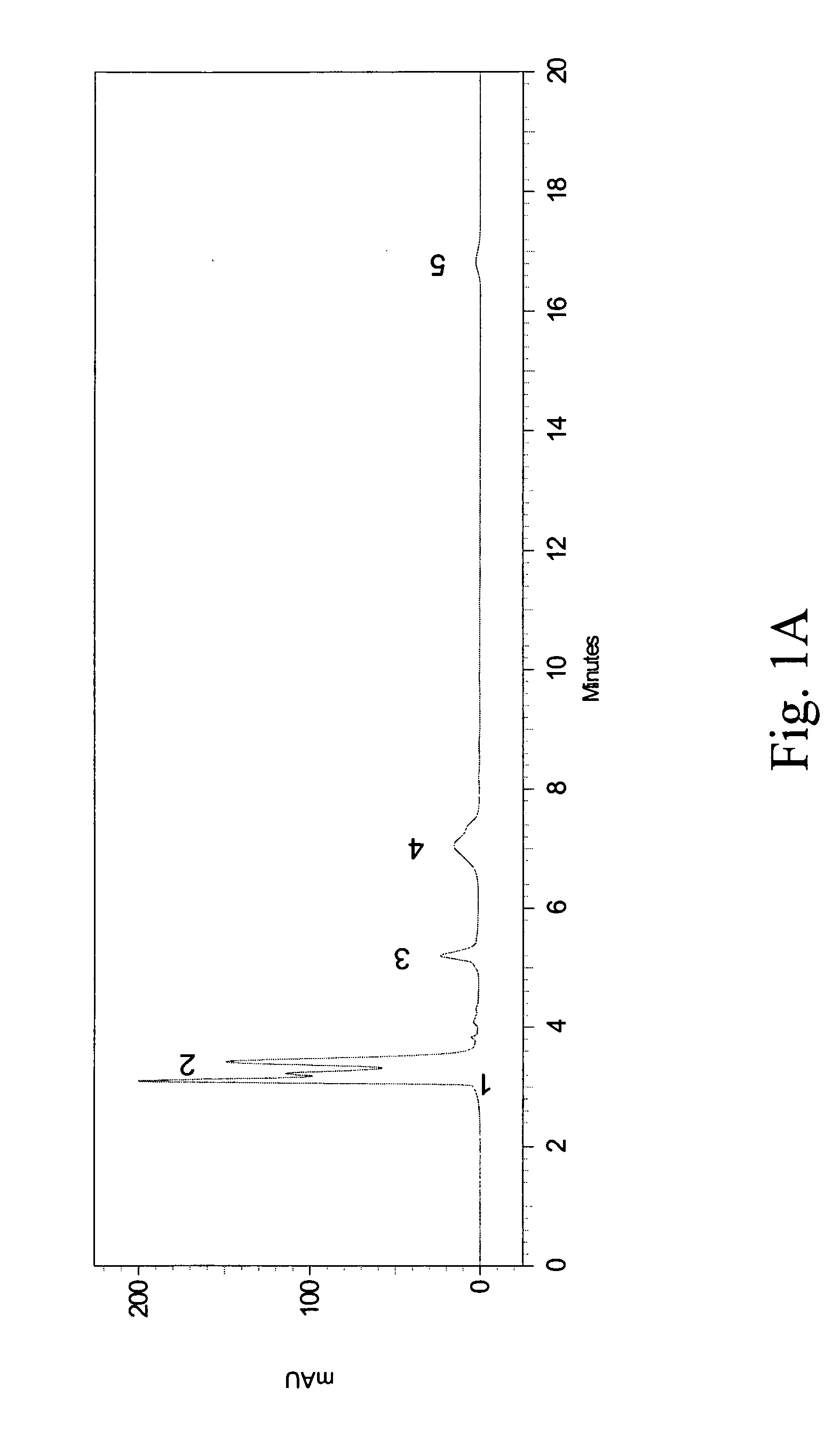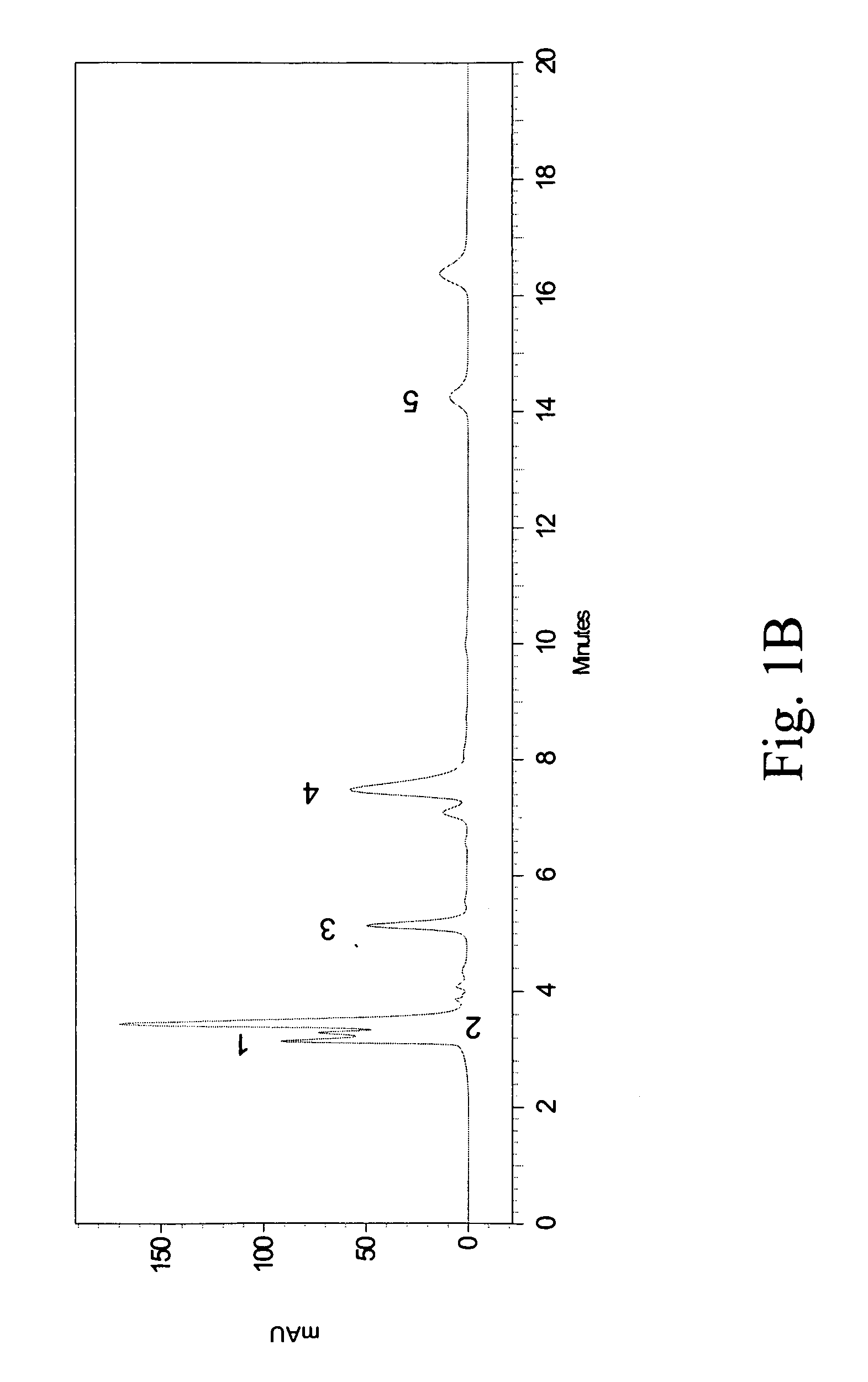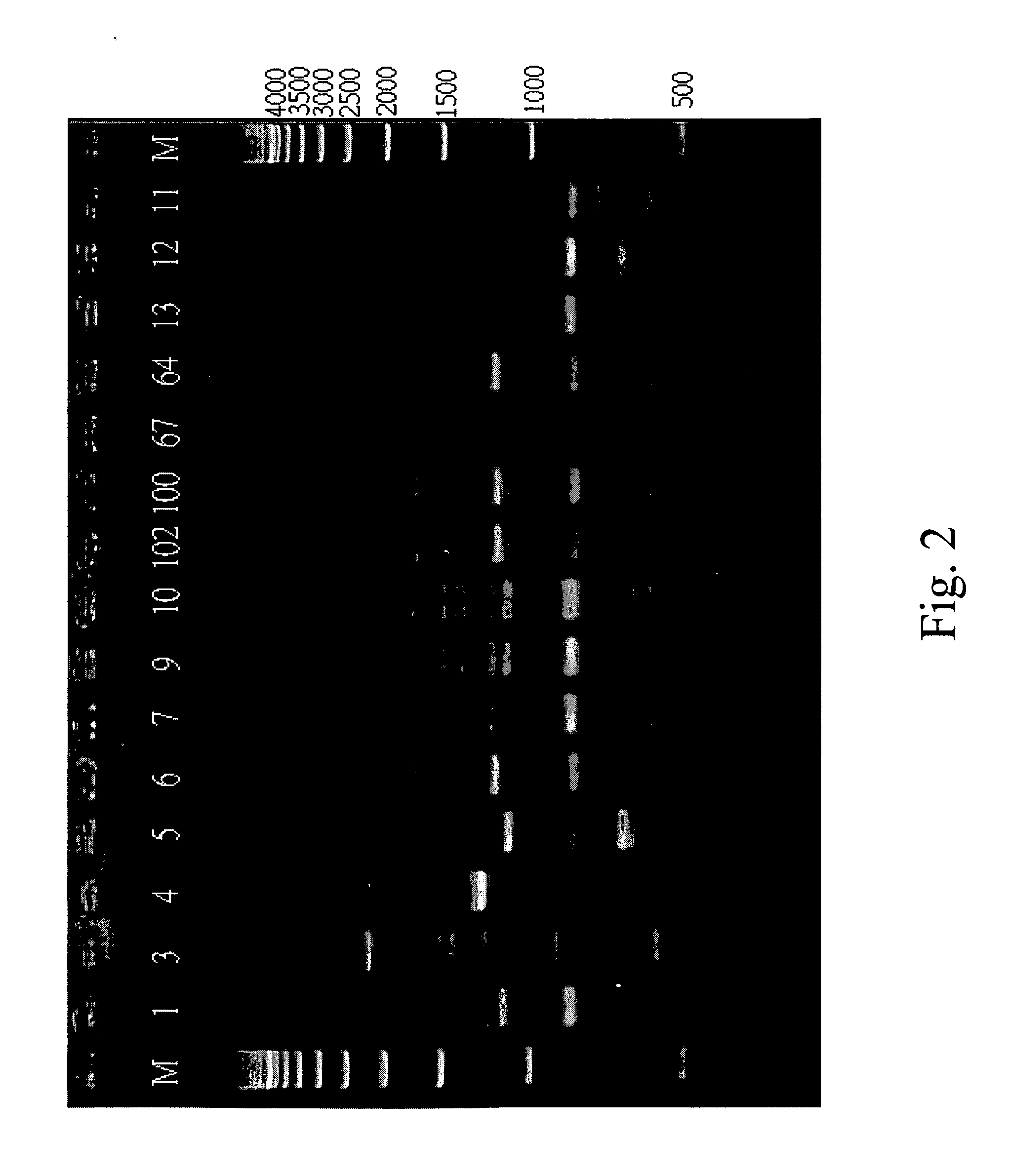Method for treating diabetic vascular complications
a technology for vascular complications and diabetic subjects, applied in the field of medical treatment of diabetic vascular complications, can solve the problems of inability to clear the specific age of the diabetic subject, drug composition, drug side effects, etc., and achieve the effect of reducing the risk of vascular diseas
- Summary
- Abstract
- Description
- Claims
- Application Information
AI Technical Summary
Benefits of technology
Problems solved by technology
Method used
Image
Examples
example 1
Preparation of Crude Extract (PH) of Dioscorea Species
[0044]Peeled tubers of Dioscorea species were immersed in an alcohol-based solution in the presence of 1% acetic acid. After stirring, the mixture solution was allowed to stand overnight. The soluble portion obtained from the process was lyophilized to yield a crude extract (PH) of the Dioscorea species.
[0045]Specifically, 1.4 kg of the peeled tubers of Dioscorea species were cut into cubes and immersed in a 1% acetic acid solution. The cubes were immersed in the acetic acid solution overnight and supernatant was removed. The cubes were lyophilized before the extraction.
[0046]The lyophilized cubes were ground and mixed with about 30% to about 90% methanol (such as about 40% methanol) as a solvent of about 1.5 L to about 2.5 L, in the presence of about 1% acetic acid solution. The mixture was stood overnight and filtered by vacuum filtering to obtain a filtrate. The filtrate was then lyophilized to obtain the crude extract (PH) of...
example 2
Analysis of the Crude Extract (PH) of Dioscorea Species
[0048]The crude extracts (including methanol and ethanol extracts) obtained from Example 1 were analyzed by HPLC using a Shimadzu HPLC system (Class VP series with Class VP 6.12 version software; Shimadzu, Kyoto, Japan) with two pumps (LC-10AT), an SPD-10A variable wavelength-programmable UV / Vis photodiode array detector, an SCL-10A system controller and a C-18 column (Supelcosil, 250 mm×4.6 mm, and with 5 μm packing; Supelco, Bellefonte, USA) fitted with a guard column (35 mm×4.6 mm, and with 5 μm packing; Supelco).
[0049]The HPLC samples of PH (10 mg / mL) were prepared using a mobile phase containing 88% water (Mobile Phase A) and 12% methyl alcohol (Mobile Phase B) into aliquots of 20 μL and loaded to the column equilibrated with the mobile phase at a flow rate of 0.9 mL / min. All the organic solvents were of HPLC grade, filtered with a 0.22 μm filter and degassed prior to use. The total run time of the HPLC method was set at 20...
example 3
Preparation of Mouse Feed Containing the Crude Extract (PH)
[0051]Purina Chow 5001, a commercially available mouse feed, was ground into powder. The lyophilized crude extract PH was added to the ground feed in an amount to replace the same amount of ground feed, to form a feed mixture. The feed mixture was uniformly mixed with distilled water, re-shaped by extrusion molding, baked for 2 min. in a microwave oven at proper power, and refrigerated at −70° C. after cooling to room temperature. After lyophilization, the feed mixture was formed into pellets very similar to those of the original the Purina Chow feed. The pellets were stored in a −20° C. refrigerator. The pellets were warmed to room temperature on the day of feeding, and were sterilized by UV lamp irradiation on a sterile work table. Feed mixtures having different concentrations of the crude extract were prepared.
PUM
 Login to View More
Login to View More Abstract
Description
Claims
Application Information
 Login to View More
Login to View More - R&D
- Intellectual Property
- Life Sciences
- Materials
- Tech Scout
- Unparalleled Data Quality
- Higher Quality Content
- 60% Fewer Hallucinations
Browse by: Latest US Patents, China's latest patents, Technical Efficacy Thesaurus, Application Domain, Technology Topic, Popular Technical Reports.
© 2025 PatSnap. All rights reserved.Legal|Privacy policy|Modern Slavery Act Transparency Statement|Sitemap|About US| Contact US: help@patsnap.com



